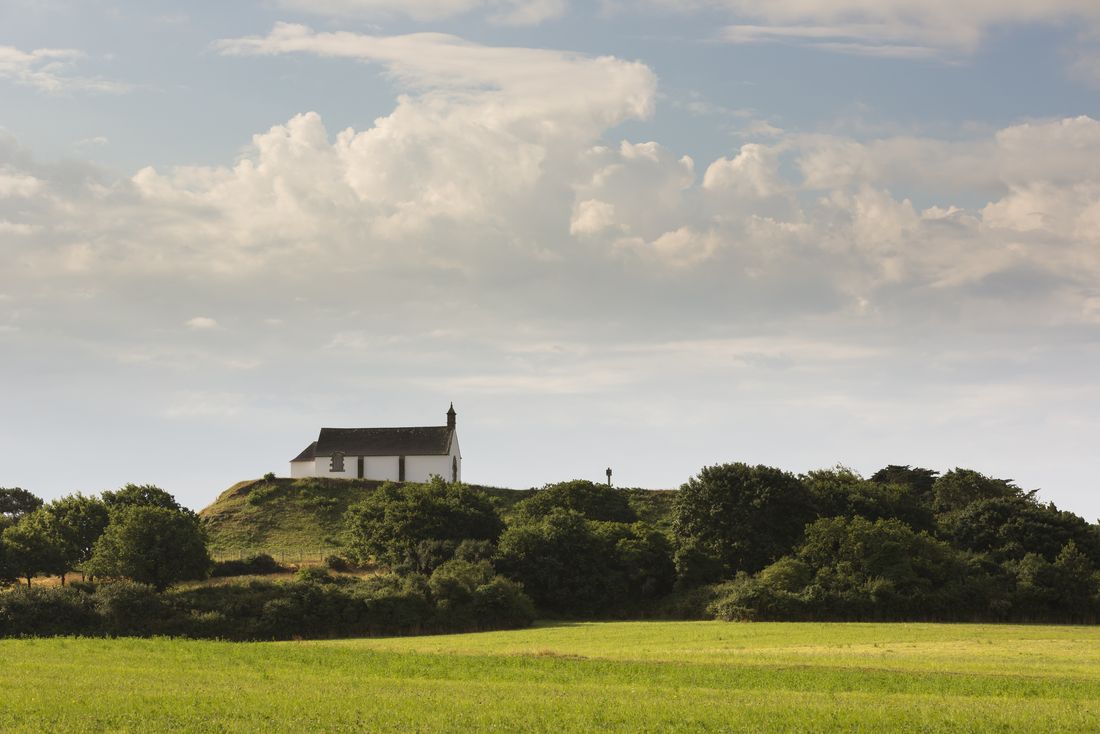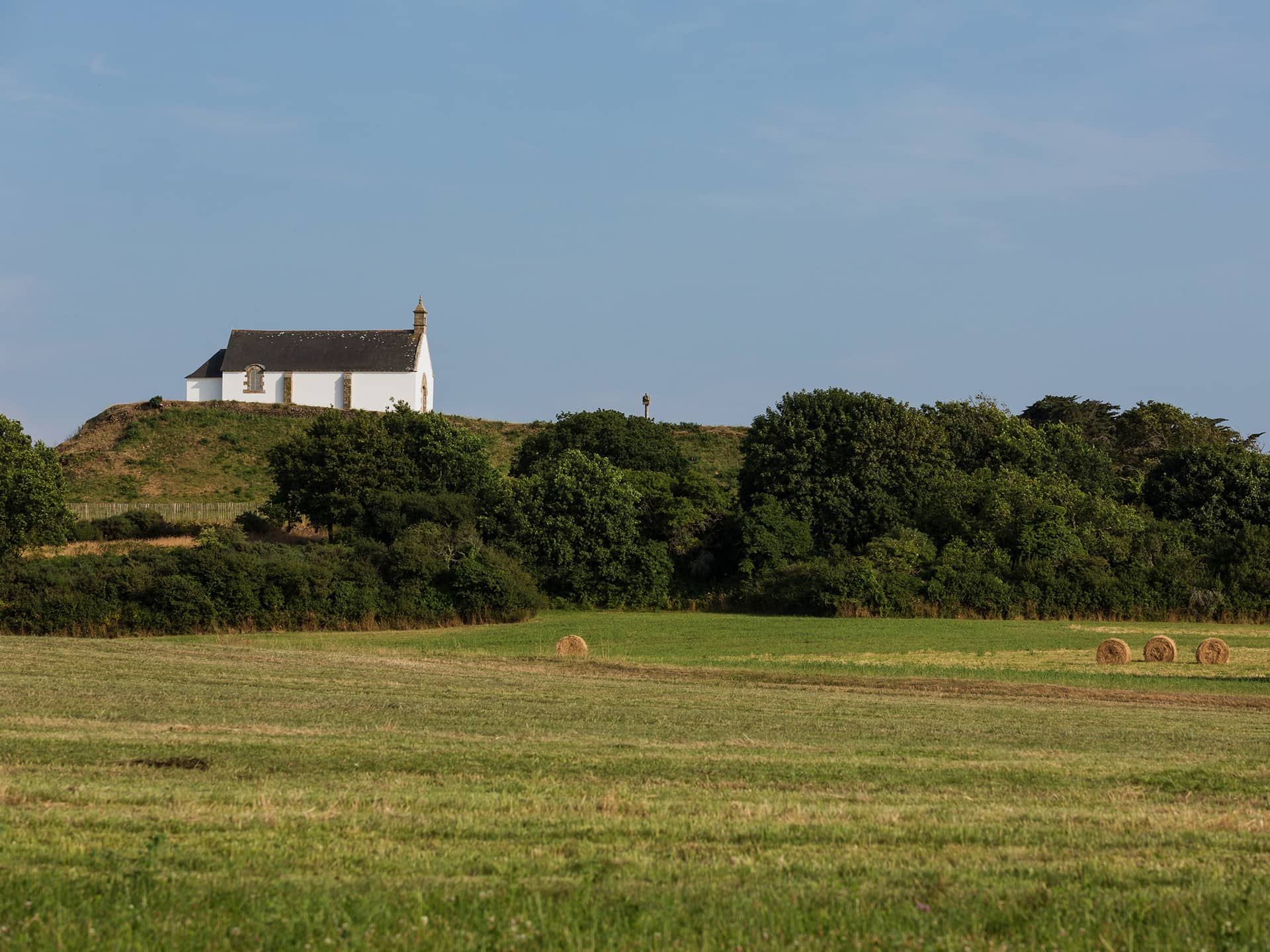Located in the present-day town centre of Carnac, the Saint-Michel tumulus, along with the Tumiac mound in Arzon and the Mané er Hroëk tumulus in Locmariaquer, is one of three giant tumuli known as ‘Carnac tumuli’. It is 125 metres long, 58 metres wide, and 10 metres high. The tumulus covers several cist graves and a passage grave to the east. The upper part of the tumulus has been levelled out and a small chapel built on top.
Its imposing presence in the landscape was an early source of intrigue for archaeologists; the first official excavations of the tumulus were carried out in 1862, directed by René Galles, a member of the Morbihan Polymathic Society. He discovered a first cist grave and its grave goods consisting of beads and celts (the old term for polished axe-heads) but suspected the existence of other structures beneath the huge tumulus. The excavations by Zacharie le Rouzic in the early twentieth century proved him right.
During Zacharie Le Rouzic’s excavations and restoration work, masonry galleries were built inside the monument to provide access to the different internal structures; these were later used for visits to the monument. These galleries are no longer open to the public for reasons of stability and safety. However, visitors can still walk over the top of the tumulus and enjoy outstanding views; an orientation table helps them get their bearings.

©FanchGalivel/PaysagesdeMégalithes
